#Henry Gilroy
Text
Debunking more myths in the GFFA: the Jedi and the clones.
I wrote a post debunking the various myths about how "the Jedi condone slavery", a while ago. Something I had omitted (because it's such a big topic) was the following two statements that concern the clone troopers' relations with the Jedi:
"The clones were genetically bred to have accelerated growth, so they're technically child soldiers."
"The clones were slaves of the Jedi."
Both the above statements are inaccurate, let's explore why.

"The clones were child soldiers"
Let's get the easy one out of the way first, because it's a logic that cuts both ways. If age is our only determination of the maturity of a Star Wars character, then Grogu is not a baby. He is aged 50, and is thus a middle-aged man.
Who cruelly eats the babies of a woman...

... and knowingly tortures animals for his own sadistic pleasure.

Of course, I'm kidding. Grogu's none of the above things.
The narrative frames him as a cute baby who does innocent baby stuff. Him eating the eggs is played off as comedic, as is him lifting with the frog. To this day, some fans still call him "Baby Yoda".
Conversely, despite the clones being 10/14-years-old, their actions, behaviors, way of thinking, sense of humor, morals etc, are all those of an adult.
Like, Ahsoka is technically older than Rex in this scene.

The scene doesn't portray them as peers, though. This isn't written as "a teen and a tween talking". No, Rex looks, acts and behaves like a grown-up and is thus framed as such by the narrative.
You can make the argument "they're child soldiers", but (unless you're doing so in bad faith) you'd also have to argue that "Grogu's an adult".

"The clones were the Jedi's slaves"
Nope. For all intents and purposes, they're in the same boat as the Jedi, who George Lucas stated multiple times had been drafted to fight in the war.
Again: both the Jedi (monk/diplomats untrained for fighting on a battlefield) and clones (literally bred en masse only to fight) are being forced to fight by Palpatine and the Senate.

Though, on paper, the clones were commissioned by Jedi Master Sifo-Dyas, it was actually done by the Sith (who either manipulated or assassinated Sifo-Dyas then stole his identity, depending on the continuity you choose to adhere to). The rest of the Jedi had no idea these clones were being created.
So while the clones are slaves... they're not owned by the Jedi.
They're the army of the Republic, they belong to the Senate. This isn't exactly a scoop, they refer to the clones as something to purchase...
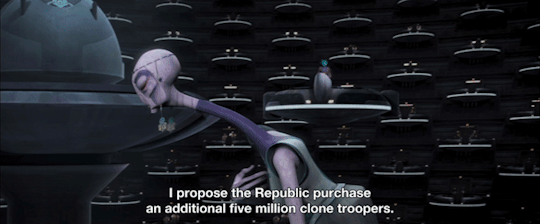
... and manufacture.

As far as the Senate’s concerned, clones are property, like droids.
Like there's a whole subplot in The Bad Batch about this very point: after the war, the clones are decommissioned and left out to dry because they literally have no rights, they served their purpose.
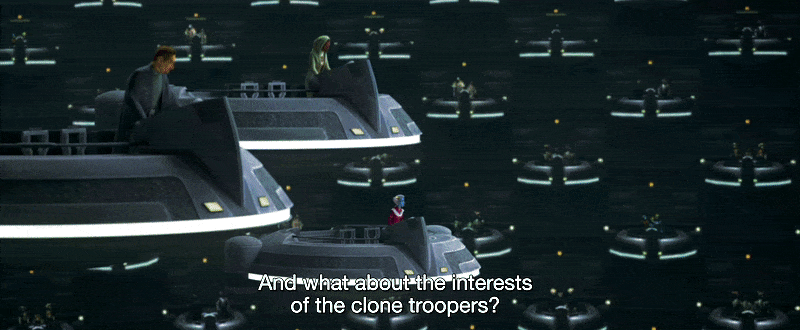
The only trooper to ever canonically blame the Jedi for the clones' enslavement is Slick, who the narrative frames as having been bribed and manipulated by Asajj Ventress into betraying his comrades.
Also, the only canonical Jedi shown to ever be mean, dismissive or mistreating the clones in any way, is Pong Krell.

And it's eventually revealed he’s in fact a full-on traitor, hence why the story frames him as an antagonistic dick from the moment he's introduced. He doesn’t represent the Jedi in any way.
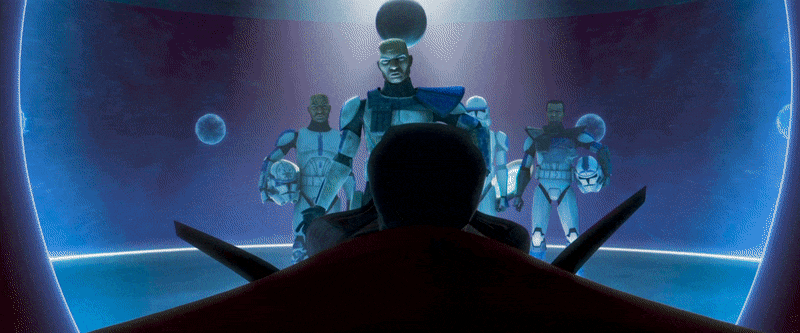
We know this because the other Jedi we’ve been shown are always prioritizing their clones’ lives over theirs, if given the chance.


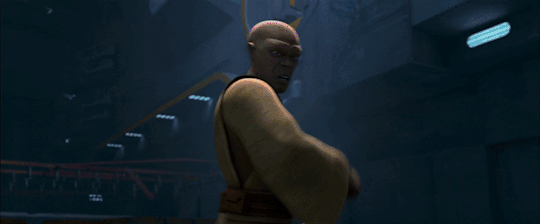

Finally, if we wanna get even more specific... as Commander-in-Chief of the Grand Army of the Republic (GAR), the clones belong to Palpatine.
Palpatine who is a Sith Lord.
Palpatine who arranged for the creation of the clones and had them all injected with a chip that would activate upon hearing a code-word...
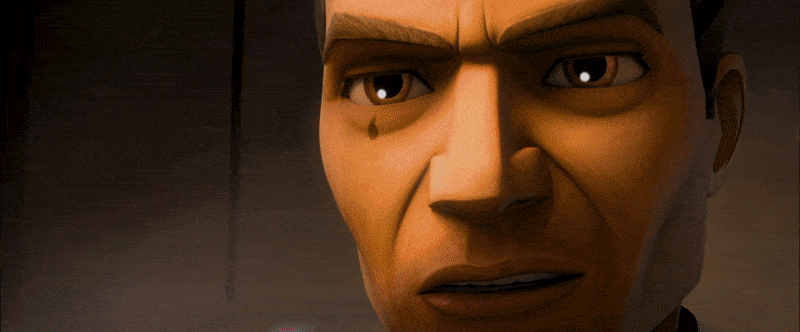
... and forced them to murder their Jedi without hesitation or remorse.
When you bear all that ⬆️ in mind and when you read this quote by George Lucas...
"The Jedi won't lead droids. Their whole basis is connecting with the life force. They'd just say, 'That's not the way we operate. We don't function with non-life-forms.” So if there is to be a Republic army, it would have to be an army of humans."
- The Star Wars Archives: 1999-2005, 2020
... narratively-speaking, everything falls into place.
Sidious knows that:
If he orchestrates a war designed to thin the Jedi's numbers, corrupt their values and plunge the galaxy into chaos...
If he wants to draft the Jedi - peace-keeping diplomats who’d never willingly join the fray - to fight in his war...
... then the only way they won't resist the draft and abstain from fighting is if they think joining the conflict will save lives.
So he creates a set of cruel, sadistic villains for them to face, opponents who will target innocent civilians at every turn...

... and instead of lifeless droids, he prepares for the Jedi an army of men... living, mortal people who, despite being well-trained, will be completely out of their league when facing the likes of Dooku...

... Ventress...
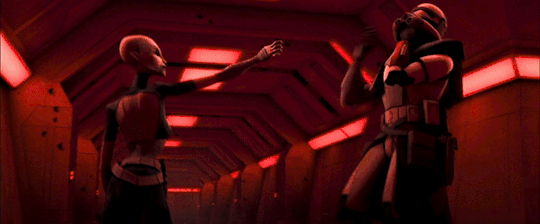
... Grievous...
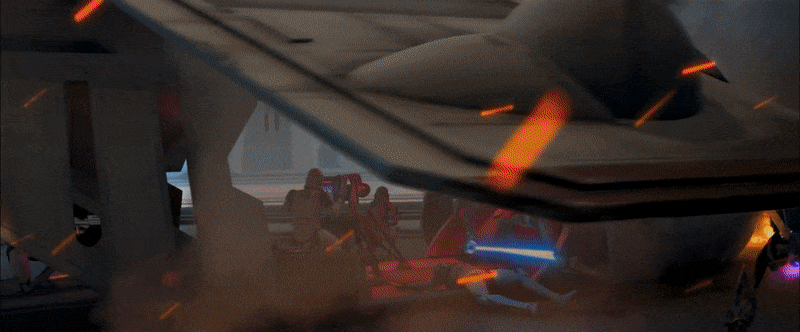
... Savage Opress...
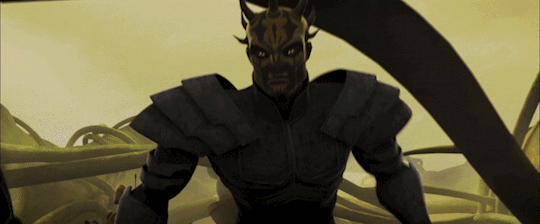
... or the defoliator, a tank that annihilates organic matter.
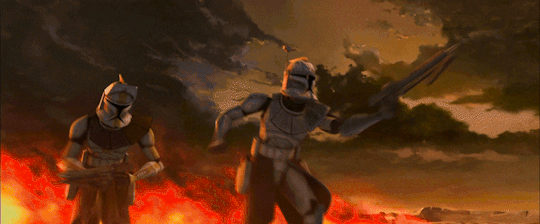
Thus, in order to save as many clone and civilian lives, the Jedi join the fray despite knowing that doing so will corrupt their values.
And as the war rages on, a bond of respect is formed between the two groups.
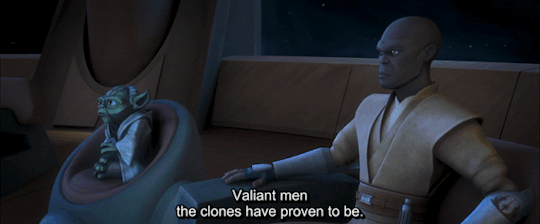
Clearly, the Jedi don't like the fact that the Republic is using the clones to fight a war, but for that matter, they don't like being in a war, in fact they advocated against it.

However, it's happening regardless of their issues with the idea or personal philosophies. Said The Clone Wars writer Henry Gilroy:
"I’d rather not get into the Jedi’s philosophical issues about an army of living beings created to fight, but the Jedi are in a tough spot themselves, being peacekeepers turned warriors trying to save the Republic."
And bear in mind, the Jedi are basically space psychics, the clones are living beings that they can individually feel in the Force...
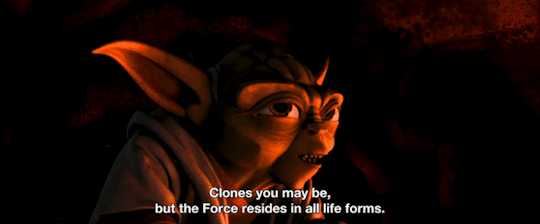
... so the Jedi feel every death but need to move on, regardless, only being able to mourn the troopers at the end of every battle.
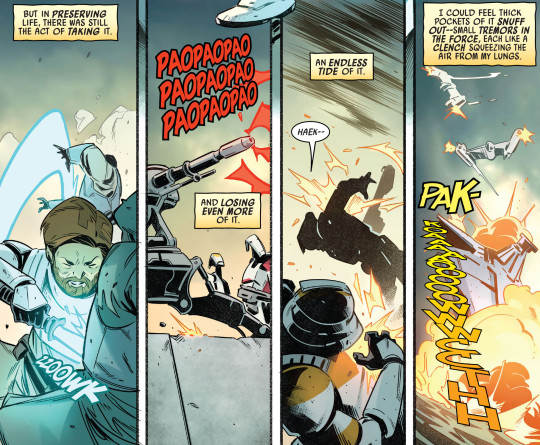
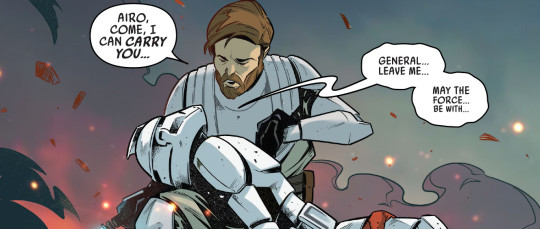
We see this in the Legends continuity too, by the way.
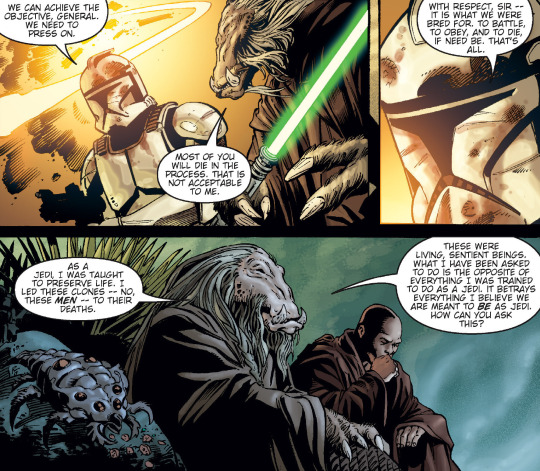
(that is, when the writers actually try to engage with the narrative)
Also, if you ask the clones, they’re grateful the Jedi have their backs.
When Depa Billaba voices her concerns about how the war is impacting the Jedi's principles, troopers Grey and Styles are quick to make it clear how grateful they all are for the Jedi's involvement:

So the clones aren't the Jedi's slaves. If anything, they're both slaves of the Republic (considering how low the Jedi's status actually is in the hierarchy).
Only I'd argue the clones have it much, much worse.
The Senate sees the Jedi as "ugh, the holier-than-thou space-monk lapdogs who work for us"... but a Jedi has the option to give up that responsibility. They can leave the Order, no fuss or stigma.
A clone trooper cannot leave the GAR! If they do, they’re marked for treason and execution. Again, they’re not perceived as “people”.
And it doesn’t help that the Kaminoans, the clones’ very creators, see the troopers as products/units/merchandise. A notion that the Jedi are quick to correct whenever they get the chance.


How The Clone Wars writers describe the clones' relationship with the Jedi.
George Lucas hasn’t spoken much about this subject aside from the quote from further up. But to be fair... the Prequels aren’t about the clones’ dynamic with the Jedi, so it makes sense that he wouldn’t talk on that subject so much.
He did mention that part of The Clone Wars’ perks is that he could:
“Do stories about some of the individual clones and get to know them.”
But that’s as far as it gets.
So for this part, I'm just gonna let Dave Filoni, showrunner of The Clone Wars and the upcoming series Ahsoka, and TCW writer Henry Gilroy - both of whom worked closely with Lucas - take the wheel. They make themselves pretty clear on how the clone/Jedi dynamic is meant to be viewed.
Here’s Henry Gilroy:
"In my mind, the Jedi see the clones as individuals, living beings that have the same right to life as any other being, but understand that they have a job to do."

"The clones see the Jedi as their commanding officers on one hand, but also, at least subconsciously, they look to them for clues to social/moral behavior."

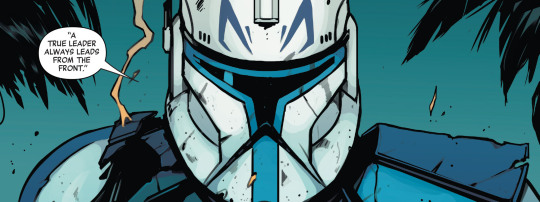
"Some clones may find themselves getting philosophical leadership from the Jedi that helps them answer some of the deeper questions of life."
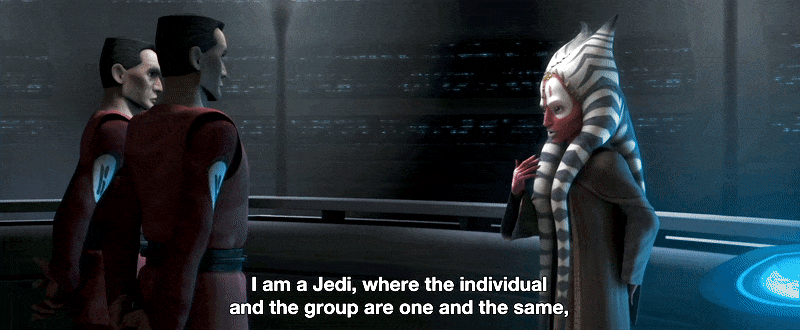
"We thought this was a great opportunity to show how the Jedi interact with clones. Specifically, Yoda in a teaching role of the clones, who were socially new, who kind of grew up— who were created to fight, and he really broadened their horizons and helped them realize there was a great big universe out there that was bigger than just fighting and killing."

And here’s Dave Filoni’s comments:
"I truly believe that the Jedi try to humanize their clones and make them more individual, as Henry says."

"I think we saw that in Revenge of the Sith, when the Clones were colorful and named under the Jedi Generals, and then in the final shots of the film with Palpatine and Vader near the new Death Star, the ships are grey, the color and life is sucked out. The Stormtroopers are only numbers and identified by black and white armor or uniforms in A New Hope."
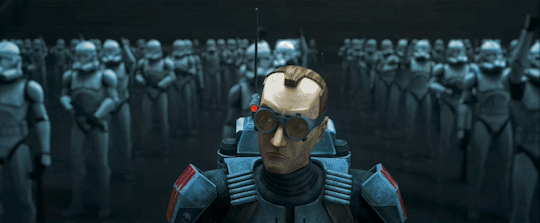
"The soldiers have become disposable to the Emperor."

"That is something the Jedi would never do."
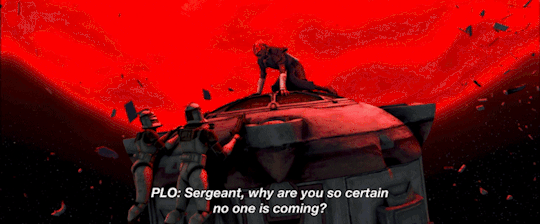
"Yoda teaching the clones much like he taught Luke. ‘Cause that was kind of natural for [the Jedi], a natural instinct to take to these clones like they’re students."
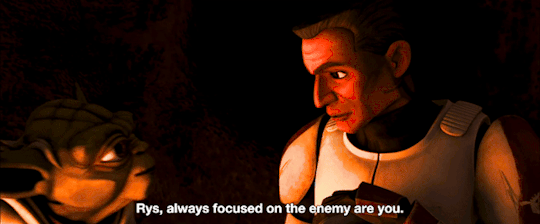
None of the above quotes from two different writers of The Clone Wars, who had many interactions with George Lucas, frame the Jedi and the clones’ relationship in a negative way.
How much more proof do we need that "the clones were slaves of the Jedi” isn’t the intended narrative?

My point being that while the clones' ordeal is indeed horrible, the Jedi have nothing to do with it. The narrative of The Clone Wars always frames it as the fault of the Sith, the Senate and the Kaminoans.
If you go by the intended narrative, the Jedi were the clones' teachers and brothers-in-arms. The clones and the Jedi were not just comrades.

They were friends.
#long post#But most of this is GIFs used for evidence#meta#SW meta#jedi#Jedi Order#in defense of the jedi#Clones#The Clone Wars#on the jedi's involvement in the clone wars#TCW#Clone Troopers#Rex#Cody#Plo Koon#Mace Windu#Obi-Wan#Yoda#Dave Filoni#Henry Gilroy#Grogu#George Lucas#flashing gif
2K notes
·
View notes
Text
I now believe that we can confidently say that Clone Wars and Rebels are good in spite of filoni, not because of him
#wooloo-writes#wooloo writes#star wars#sw#when the ratio is 2 good shows to several bad shows#(and one ok show that he was not as involved in)#its pretty clear he's not responsible for the quantity of rebels in tcw#i don't know who is#cough cough#george lucas#henry gilroy#greg weisman#cough#but its not him#star wars rebels#star wars the clone wars#dave filoni#anti dave filoni#dave filoni critical
275 notes
·
View notes
Text

The Best Big Brother In The Whole Wide World “Oh Brother” (1992)
#90s#warner bros#fox kids#tazmania#spin off#looney tunes#tasmanian devil#taz#jake#gif#soccer ball#taz mania#henry gilroy#art vitello#lenord robinson
21 notes
·
View notes
Photo

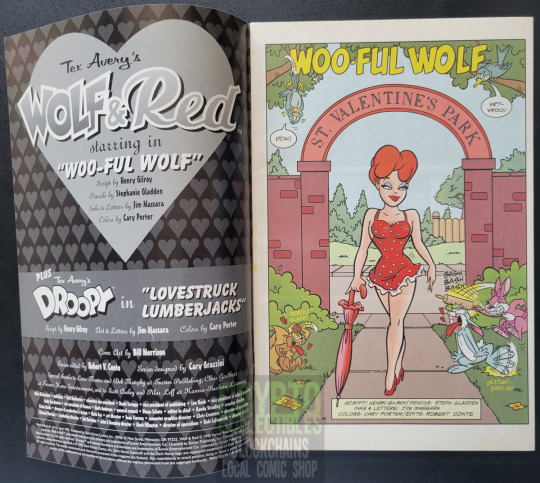

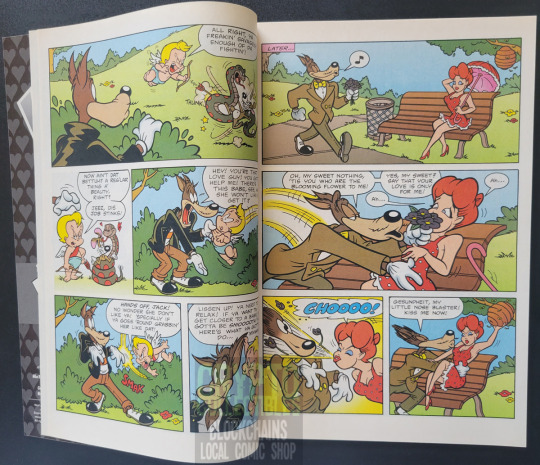


Wolf & Red #1 (April 1996) by Dark Horse Comics
Written by Henry Gilroy, drawn by Stephanie Gladden and Jim Massara, cover by Bill Morrison.
#Wolf & Red#1996#Dark Horse Comics#Cartoons#Bill Morrison#Henry Gilroy#Stephanie Gladden#Jim Massara#Tex Avery#MGM#Etsy#Vintage Comics#Comic Books#Comics#Red Hot Riding Hood#Wolf#Screwball Squirrel#Droopy#Spike#Droopy ahd Spike
33 notes
·
View notes
Text

Panel Announcement: How to Write Star Wars Good Star Wars greats Randy Stradley, Jason Fry and Henry Gilroy will share their insights on what makes a Star Wars story special. This panel will occur on Sunday, September 10th at the Marriott Convention Center in Burbank, CA. Buy tickets by 8/29 and join us for a celebration of all things Expanded Universe Legends Con the weekend of September 9th & 10th! https://www.eventbrite.com/e/legends-consortium-2023-tickets-541786186067
#Expanded Universe#Star Wars Expanded Universe#Star Wars Legends#SWEU#Star Wars EU#SW Expanded Universe#LegendsCon#Star Wars Books#Star Wars Comics#Star Wars Games#Randy Stradley#Henry Gilroy#Jason Fry#Dark Horse Comics#Crimson Empire#Dark Times#Star Wars Dark Times#Star Wars Lore#Star Wars Tales#Star Wars The Clone Wars#Star Wars Rebels#Writing Workshop#Los Angeles Writers#Los Angeles Writer#Writing Community#Writers Workshop
15 notes
·
View notes
Photo

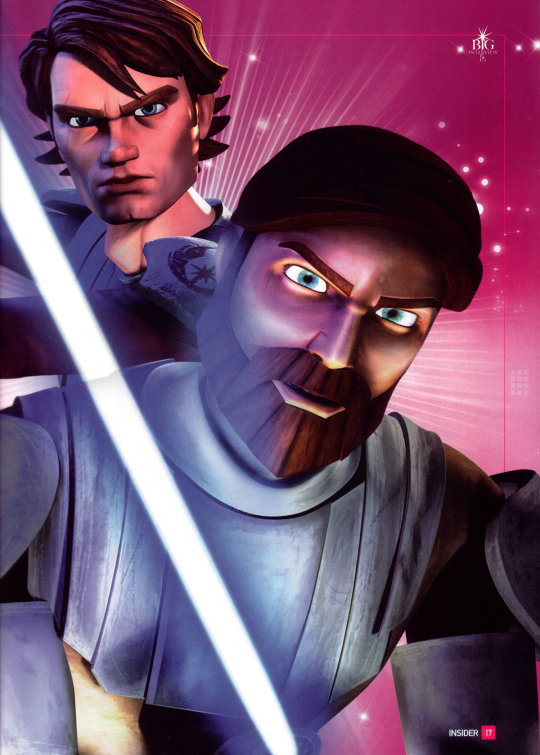

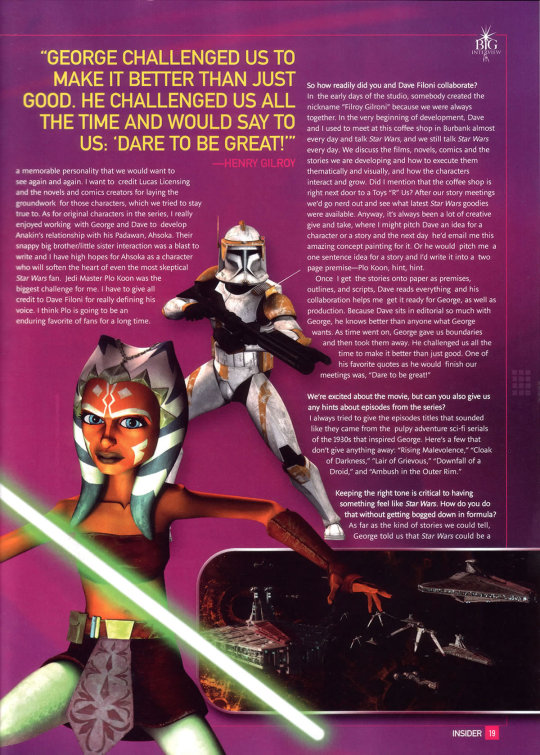

CLOAK OF DARKNESS (#103, SEP 2008)
The Clone Wars animated feature—and the television series to follow—provides new insight into Anakin’s heroics and the wartime abilities of the Jedi generals and their clone soldiers. Fifteen-year animation veteran Henry Gilroy is a chief writer of the new tales. Here, he tells Insider how The Clone Wars is different from other animated series, how many of the story ideas came from George Lucas, and which member of the Jedi Council is going to be your new favorite. Words: Dan Wallace
Insider: What can fans expect from the movie and series? Having already seen glimpses of The Clone Wars in Revenge of the Sith and the final, treacherous way that Darth Sidious brought an end to that conflict, how do you handle writing characters with predestined fates?
Henry Gilroy: Have you ever missed an episode of your favorite serialized TV show and refused to watch the 411 current episode until you’ve seen the one you missed? We’re going to see the reasons why Anakin misses Padme so much in Episode III. We’re going to see why Grievous hates Jedi so much. We’re going to see why the Jedi are so war weary and determined to end the fighting.
In Episode I, Qui-Gon Jinn told Padme, “I can’t fight a war for you.” In Episode II, Mace Windu says, “We are keepers of the peace, not soldiers.” Dave [Filoni, director of the movie and supervising director of the series] and I wanted this theme to permeate everything, because while the Jedi are forced into the role of military generals and must command clone armies, they are doing something that is opposed to their ideals. It really set the stage for interesting stories that have relevance today about how easy it is to be drawn into wars that maybe we shouldn’t [be].
How did you come to be writing for Star Wars: The Clone Wars?
Back in April 2005, I met with producer Catherine Winder. I brought her a one page pitch of what The Clone Wars could be with a logline that read, “Star Wars meets Band of Brothers.” I don’t think anyone ever saw my pitch, but I think she was impressed that I knew the universe well enough to have something prepared. I also had written several Star Wars comics [The Phantom Menace, Attack of the Clones] as well as having a decade of experience on various animated action-adventure series [Batman, Justice League] that made me a good candidate. I think another big reason I got the job is that I love to collaborate with other creative people, and being able to do that well is a necessity on a project like this. After weeks of writhing in agony and suspense as Catherine met with other writers, I got the thrilling news that I was ‘the chosen one’ and here I am three years later.
How did The Clone Wars go from script to finished animation?
The initial 15 or so story ideas were generated by myself and [director] Dave Filoni. We’d develop the stories into one- or two-page premises, then meet with George Lucas and he would input his ideas. Once George liked a story, we’d go through the outline process to figure out the specific character and plot arcs, and then we’d turn that into a script. Once we were happy, we’d send that back to George for his input. When George liked it, the script went final and the story would go into production, which means characters, ships, and locations are designed by our terrific design team. Then the script is pre-visualized, or storyboarded, by our awesome story team.
When the script goes final, it’s not really ‘final.’ The final script would be the end of the writing process on 95 per cent of animated television series. But at Lucasfilm, George uses movie-like pre-visualization and editorial stages as a big part of the writing process. The great thing about working this way is that you can really refine the story visually, adding and subtracting story elements to build drama and tension. Even though The Clone Wars started as made for television, George wanted a process where he could be involved creatively at every step. So making The Clone Wars series is more like making an animated feature except that every single episode is done this way! As Dave and I came from TV, George would regularly remind us, “We’re not making television here. We’re making cinema.” And that’s why it wasn’t really a surprise when he decided to release The Clone Wars first as a full-fledged animated feature.
It sounds like George Lucas was involved every step of the way.
George is the Alpha and the Omega, and is involved in the story from beginning to end. On The Clone Wars, that means from the initial story idea until the final sound mix. I knew from the moment I got the job that The Clone Wars was going to be George’s show. My job was to execute his vision and I have always tried my best to do that.
Who are the other writers involved?
My chief collaborators were Dave Filoni and George Lucas. Every story idea I had, Dave would hear first and once we got it to a place we liked, we would submit it to George who would bring his own magic. After about the first batch of stories, George got so excited about the show, he started writing his own story outlines! He’d send them over and we’d craft them into scripts. As time went on, George became more involved and wrote more stories and just about every story now comes from ‘The Maker’ himself.
The primary freelance writer I worked with was prolific animation veteran Steven Melching, who was invaluable because he is a great talent and really knows the Star Wars universe well. Then about a year into the project, I got some much needed help at Skywalker Ranch in writer Scott Murphy, who brought his experience as a live action TV story editor to the production for a few months. A couple of other writers I’d like to mention who did solid work on the series were George Krstic, Paul Dini, and Katie Lucas. [The screenwriting credits for the movie go to Gilroy, Melching, and Murphy.]
Are there any characters from the prequels you really wanted to explore?
I really enjoyed writing Obi-Wan Kenobi. Early on, I pushed for a story that gave us a little window into Obi-Wan’s past that added a new dimension to him. I think it really deepens this character that we already love. I had a personal goal to realize every member of the Jedi Council on the screen as a memorable personality that we would want to see again and again. I want to credit Lucas Licensing and the novels and comics creators for laying the groundwork for those characters, which we tried to stay true to. As for original characters in the series, I really enjoyed working with George and Dave to develop Anakin’s relationship with his Padawan, Ahsoka. Their snappy big brother/little sister interaction was a blast to write and I have high hopes for Ahsoka as a character who will soften the heart of even the most skeptical Star Wars fan. Jedi Master Plo Koon was the biggest challenge for me. I have to give all credit to Dave Filoni for really defining his voice. I think Plo is going to be an enduring favorite of fans for a long time.
So how readily did you and Dave Filoni collaborate?
In the early days of the studio, somebody created the nickname “Filroy Gilroni” because we were always together. In the very beginning of development, Dave and I used to meet at this coffee shop in Burbank almost every day and talk Star Wars, and we still talk Star Wars every day. We discuss the films, novels, comics and the stories we are developing and how to execute them thematically and visually, and how the characters interact and grow. Did I mention that the coffee shop is right next door to a Toys “R” Us? After our story meetings we’d go nerd out and see what latest Star Wars goodies were available. Anyway, it’s always been a lot of creative give and take, where I might pitch Dave an idea for a character or a story and the next day he’d email me this amazing concept painting for it. Or he would pitch me a one sentence idea for a story and I’d write it into a two page premise—Plo Koon, hint, hint.
Once I get the stories onto paper as premises, outlines, and scripts, Dave reads everything and his collaboration helps me get it ready for George, as well as production. Because Dave sits in editorial so much with George, he knows better than anyone what George wants. As time went on, George gave us boundaries and then took them away. He challenged us all the time to make it better than just good. One of his favorite quotes as he would finish our meetings was, “Dare to be great!”
We’re excited about the movie, but can you also give us any hints about episodes from the series?
I always tried to give the episodes titles that sounded like they came from the pulpy adventure sci-fi serials of the 1930s that inspired George. Here’s a few that don’t give anything away: “Rising Malevolence,” “Cloak of Darkness,” “Lair of Grievous,” “Downfall of a Droid,” and “Ambush in the Outer Rim.”
Keeping the right tone is critical to having something feel like Star Wars. How do you do that without getting bogged down in formula?
As far as the kind of stories we could tell, George told us that Star Wars could be a forum for any kind of tale. So even though the movie and series are set against the backdrop of The Clone Wars, there are dramas, romances, mysteries, horrors, comedies, and more. The biggest challenge was making the universe feel as large as it is in the existing Star Wars movies within the limitations of an animated movie and TV series, meaning we couldn’t go to three new planets every episode or have 10 new characters. We tried to include new characters in every single episode, extremely difficult on a weekly CG animated TV show. There is the time limitation—the original attack on the Death Star took 20 minutes of screen time, but our entire episodes are only 22 minutes, so it was great to be able to start with a full feature-length movie. It’s always a great challenge to squeeze in all the stuff we love about Star Wars: exotic planets and aliens, epic space battles, exciting lightsaber duels, plus the solid character development that brings it all together into our limited screen time.
How do you capture the voices of characters that fans know inside and out from watching the movies?
I was working directly with George and he created these characters. No one knows them better. The fun part for me was putting the characters we know from the live-action movies in new situations to explore how they would behave. I think Dave and I got it right most of the time, then George would come in and add bits of action, dialogue, and humor that only he can to give it that classic Star Wars feeling.
WHO’S HENRY?
As well as scripting the Dark Horse comic-book adaptations of The Phantom Menace and Attack of the Clones, writer Henry Gilroy has had plenty of experience writing for animated TV series and movies made for DVD release. Here’s a selection of his pre-The Clone Wars credits:
Transformers: Animated (2008)
Justice League (2004)
Lilo & Stitch: The Series (2003)
Bionicle: Mask of Light (2003)
Atlantis: Milo’s Return (2005)
Timon and Pumba (1995)
The Tick (1994)
Batman (1992)
WRITER’S ROOM
What have the other writers on The Clone Wars done?
Steven Melching
Legion of Super Heroes (2008)
The Batman (2004-05)
Scott Murphy
Flash Gordon (2007)
Angel (2001-02) [writer & story editor]
The Nightmare Room (2001)
18 notes
·
View notes
Text



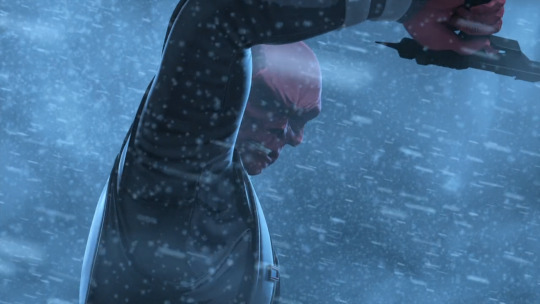
youtube
Iron Man & Captain America: Heroes United (2014)
My rating: 4/10
I have no idea why they would make a sequel to that crappy Iron Man & Hulk movie, but they did, and while it is marginally better than its predecessor (mostly, I think, because it has a better villain - Nazi punching will just always be superior to some generic energy being of the week), it still has much the same issues and just isn't very good.
#Iron Man and Captain America: Heroes United#Eric Radomski#Leo Riley#Todd Casey#Henry Gilroy#Brandon Auman#Adrian Pasdar#Roger Craig Smith#Fred Tatasciore#Youtube
1 note
·
View note
Text
14.01.24
#Mira-Marathon | Star Wars
Cartoon
Name: Star Wars: The Clone Wars (2008);
Production Studios: Lucasfilm, Lucasfilm Animation;
Director by: Dave Filoni;
Screenwriter: Henry Gilroy, Steven Melching, Scott Murphy;
Starring: Matt Lanter, Ashley Eckstein, James Arnold Taylor, Dee Bradley Baker, Tom Kane;
Genres: Science Fiction, Action, Adventure;
Running Time: 1 hour 38 minutes;
The cartoon "Star Wars: The Clone Wars" tells the fascinating story of the Jedi Ahsoka Tano and her teacher Anakin Skywalker. Contemplate the exciting plot, impressive characters and excellent visual effects. Friendship, the dark side of the Force and exciting battles. Some boring dialogue and possible childishness for some viewers.
My rating: 5/10
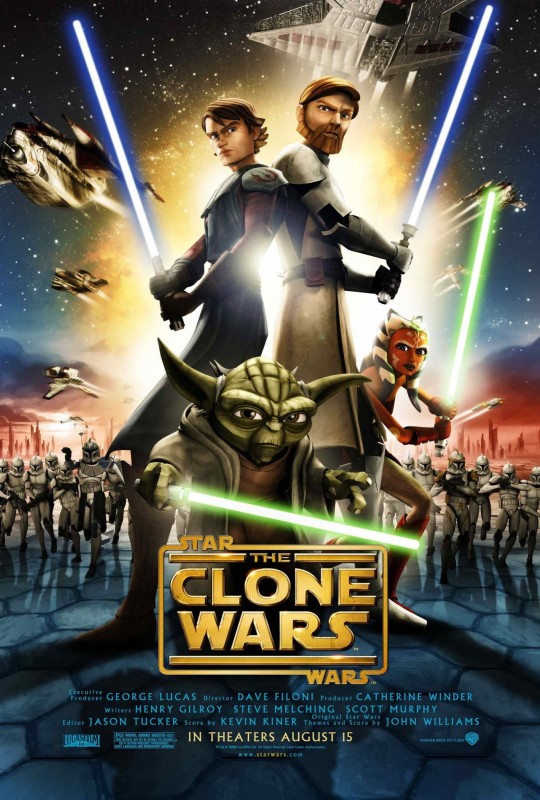
#mira marathon#star wars#cartoon#star wars the clone wars#the clone wars#2008#lucasfilm#lucasfilm animation#dave filoni#henry gilroy#steven melching#scott murphy#matt lanter#ashley eckstein#james arnold taylor#dee bradley baker#tom kane#science fiction#action#adventure#1 hour#5/10
0 notes
Text
i think my best trait as a star wars fan is that i chose to skip the zygerria arc
#im say ing no to a kid needing to dress and act like a sex slave#what the fuck were they thinking#specifically directed at henry gilroy#zygerria arc#ahsoka tano#star wars#the clone wars
10 notes
·
View notes
Text
unpopular opinion TCW time
AV Club’s Kevin Johnson once said he feels TCW starts going downhill post season 2, and I unfortunately agree with him-though he has changed his opinion over time.
For context, I hate Dave Filoni and love Genndy Tartakovsky.
Here is my take on TCW:
The TCW movie is underrated and a solid B+. Yes it has animation issues, but it also functions really well as the series pilot. It does a great job developing Anakin and Obi Wan’s friendship, Anakin and Ahsoka’s relationship, and Ahsoka’s psychology. She’s impulsive, hotheaded, slightly rebellious, and insecure. She really feels like a walking talking avatar of George’s love for teen rebellion-the Korra to Luke’s Aang. Her rebellious nature forces Anakin to mature, just like George wanted when he assigned her to him-yes really.
Throughout the movie, Ahsoka overcompensates for her insecurity. This overcompensation grates on Anakin throughout the film. Eventually, he asks her why she’s acting so unruly, prompting her to reveal her insecurity. This motivates Anakin to reassure her, which again, solidify their big brother little sister relationship and reveal Anakin’s maturity and compassion to the audience.
This scene is hands down the best scene in the film.
To make matters better, a phenomenal voice cast does a great job brining all of this solid character work to life. Although his British accent could be better, James Arnold Taylor brings so much charm, life, and humor to Obi wan. Matt Lanter injects Anakin with infectious senses of humanity and charisma, and Dee Bradley Baker does masterful work as the clones-even though his casting choice is problematic to say the least.
And of course Ashley Eckstein absolutely shines as Ahsoka. She delivers a truly phenomenal child hero performance, second only to Mark Hamil himself imo.
Now onto the show proper.
IMO Season 1 of TCW is the best of the bunch. Yeah, it makes some narrative mistakes-it sucks how Filoni nerfed the regular battle droids and grievous-but, for the most part, it didn’t mess with the prior established canon-with the exception of the godawful lair of Grievous-The writing team was-dare I say it-CREATIVE. A Filoni series being creative? What a novel concept.
Back then, the great Henry Gilroy-who worked on Super Robot Monkey Team Hyper Force Go and Batman TAS-and Steven Melching-who would later work on Transformers Prime-headed up the writing. They alongside Lucas reigned in Filoni. Furthermore, they, alongside talented writers such as the great Paul Dini and Katie Lucas, delivered some really well done one of stories: Tresspass, Ambush, Rookies, Hostage Crisis, Cloak of Darkness, the Malevolence trilogy, Jedi Crash, the Ryloth arc, mystery of a thousand moons and so on. Gilroy-who unfortunately penned lair of Grievous-and Melching had years of experience writing comics and episodes of tv animation under their belts, and you can feel that experience all over TCW season one. It feels like a really well done SW anthology comic in animated form. I wish the entire show was like that. No bloated arcs, no messing with the prior established canon, no rehashing material from Micro series. Just fun, thoughtful, one of episodes. Once Gilroy and Melching left, Filoni took over, and things go to poop.
Not to mention, to paraphrase, Anti Anakin, Ahsoka genuinely shines in season one and season 2-with the exception of lightsaber lost-as the audience surrogate. Ahsoka works larelgy because the writers try to make her feel like an actual teenager rather than an idealized version of a teen. That said, her depiction can unfortunately come off as somewhat stereotypical and dated by modern standards. Furthermore, the writers occasionally take her “hot headed, rebel teen” character too far-think her stupid interrogation of Gunray for instance.
Before we discuss the later seasons, let’s discuss the animation, although the movie and show suffer from stiff, weightless, animation and unimpressive posing, the actual artwork-delivered by the great Killian Plunkett-looks fantastic. When adapting Genndy’s style to 3D, the crew wisely tweaked his designs to look like oil painted wooden puppets-a la Team America-and the style simply works. It fits SW’s living painting aesthetic and pulp sci fi tone like a glove, and it straddles cg animation’s weakness of making human beings look like plastic toys. Furthermore, the crew supports the style with beautiful matte painted environments, and painterly lighting and character texturing-those last two elements were delivered by the truly talented Joel Aron in the later seasons.
Now back to the writing.
Season 2 has some really good episodes, but it’s also when Filoni’s gigantic ego, obsession with Ahsoka, and lack of creativity start rearing their ugly heads.
The good stuff in season 2 includes the cad bane trilogy, the boba fett arc, bounty hunters, the Zilo beast two parter, the last 3 episodes of Geonosis-landing on point rain bores me, and the deserter. Unfortunately, it also contains garbage like the mando stuff-I don’t like Karen Travis, but it doesn’t excuse what Filoni did to her, and a direct rehash of microseries in the form of the stupid cat and mouse.
Season 3 has good eps like heroes on both sides, clone cadets, but the cracks really begin to expand here. The show rips off microseries during the mortis arc-Anakin has ANOTHER vision of Vader, really Filoni-Ahsoka begins to transform from a really well done if dated portrayal of a teenager into a downright problematic “hero” whose faults go unpunished by the narrative, the show bastardizes the original backstory of the night sisters, and character assassinates Quinlan Vos.
Season 4 features the show stopping umbara, maul, Ventress, and Obi wan undercover arcs-that last one loses points for throwing in a pointless Dooku fight.
However, it also throws in THREE unimaginative and pointless Anakin vs dooki fights, rips off microseries AGAIN with the water war arc, and fails to recognize ahsoka’s cold behavior to Anakin during the zygerrian arc.
Season 5 rips off microseries AGAIN during the youngling arc-for the record I like that arc, but also featured the solid if a bit bloated onderon arc, and the maul and Ahsoka arcs.
I want to love those last two arcs, but they are built on some immoral story choices. The maul arc relies on s2′s mando story and the s3 nughtsisters arc-both of which steamrolled the eu. Meanwhile, the wrong jedi arc, which has my favorite moment in all of fiction-Ahsoka leaving the order, character assassinates Barris.
S6 features the eu steamrolling fives arc, the problematic Clovis arc, the ok jar jar arc, and the darth bane disrespecting yoda arc.
Let’s not bother with Rebels seasons 2-4 or TCW Season 7.
It’s a shame that such a talented cast and crew were squandered on a talentless asshole like Filoni.
7 notes
·
View notes
Text




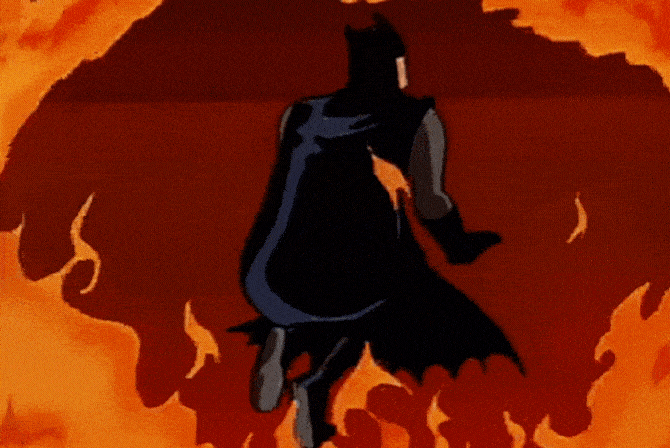
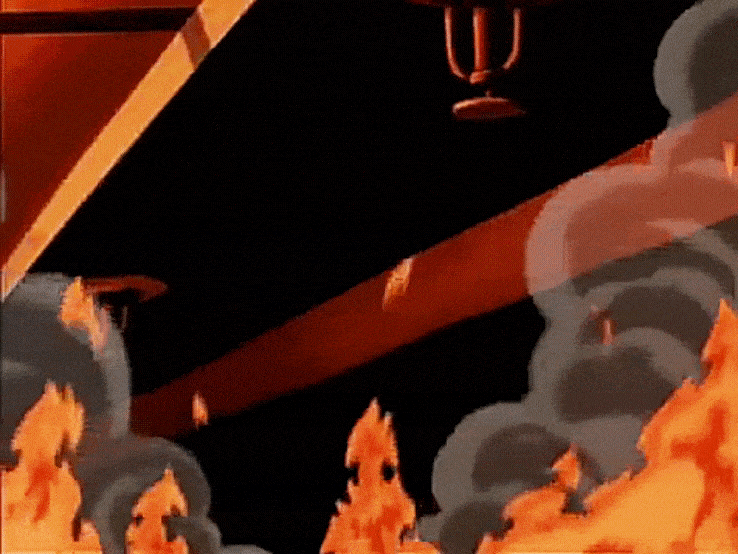



Batman: The Animated Series ~ Nothing to Fear (S1E10)
#btas#batman the animated series#batman#bruce wayne#thomas wayne#my post#dc#1990s#1990s tv#kevin conroy#richard moll#boyd kirkland#henry t gilroy#sean catherine derek#this episode really hits different once you read finding batman
6 notes
·
View notes
Text
not to talk about Star Wars on main and I'd fight Dave Filoni in a Waffle House parking lot as much as the next burned out former Star Wars fan, but also it is so funny to me when people blame Dave for stuff in TCW that comes directly from George Lucas. Ahsoka being Anakin's padawan was George Lucas's decision, not Dave Filoni's.

from The Art of Star Wars: The Clone Wars, which I realize has been out of print for a good long while now.
text: A teenage Togruta Padawan, Ahsoka Tano was a completely new character. "Ahsoka came out of an earlier idea for the series when I didn't think we were going to have Anakin Skywalker and Obi-Wan Kenobi in it," says Filoni. "Henry [Gilroy] and I came up with a concept about two Jedi, a Master and a Padawan, assigned to the black market."
Though they jettisoned the concept once Lucas made it clear that the series would feature Skywalker and Kenobi, Gilroy and Filoni stuck with the idea of a girl Padawan. "Dave and I figured that Anakin was a Jedi Knight very early in the war, so we thought it would be interesting if we gave Obi-Wan a replacement Padawan," recalls Gilroy. "But George wanted her to be Anakin's Padawan."
"We added the idea of a Padawan so that we wouldn't be stuck in the same relationship dynamic between Anakin and Obi-Wan," says Lucas. "This is a way of explaining Anakin's rise to being a full-fledged Jedi, and at the same time the growing relationship between Anakin and Obi-Wan as friends, as equals. In order to do that, we needed someone to take on the role of the younger person who is being taught in these stories."
"We were as surprised as anyone that Anakin had a Padawan," laughs Filoni, who got the task of figuring out how to work a major new character into the Star Wars saga. Filoni and Gilroy developed her character as a mix between Anakin's brashness and Obi-Wan's measured judgment, reflecting the shift between the Republic and the oncoming Empire.
"Anakin is in favor of a stricter type of government. Obi-Wan represents the Old Republic," explains Filoni. "Ahsoka's in between them, looking back at what was, looking forward to what might be."
#also I have the special edition of this book which is apparently worth OVER TWO THOUSAND DOLLARS?????#I've got the regular edition back home which is still worth several hundred because it's out of print#I think it's always good to look back at original intentions#for example I got the avengers art book recently and hoo boy they did not know the tesseract was an infinity stone back then#but honestly they did a great job retconning that in#bedlam watches star wars
225 notes
·
View notes
Text
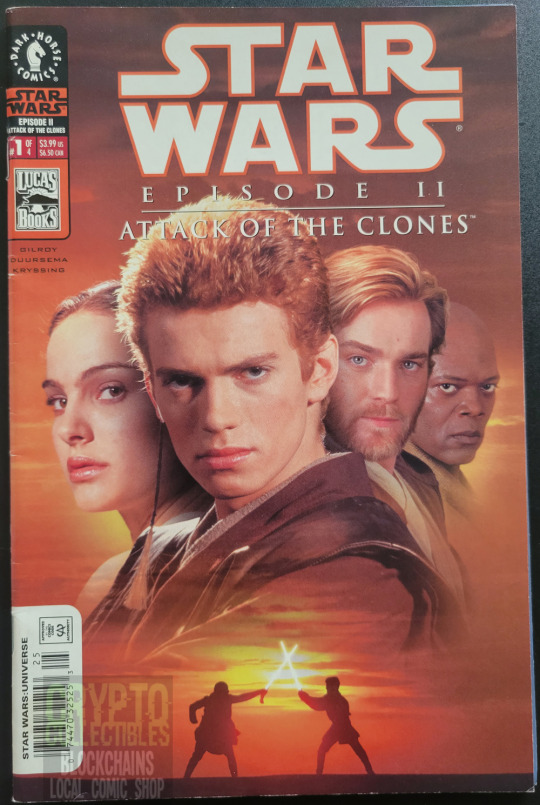
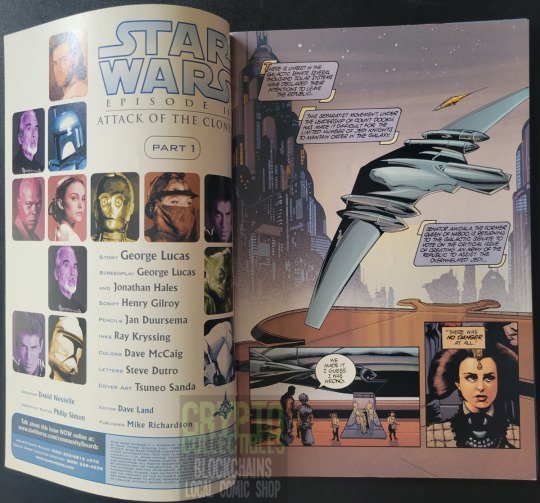

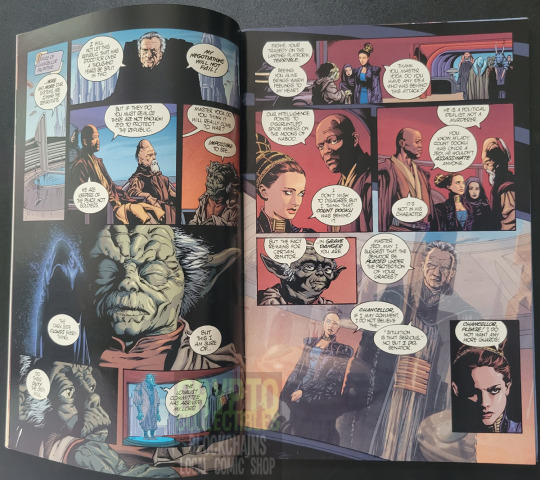
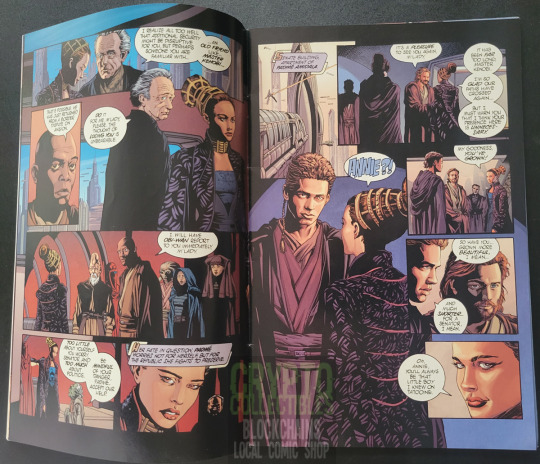
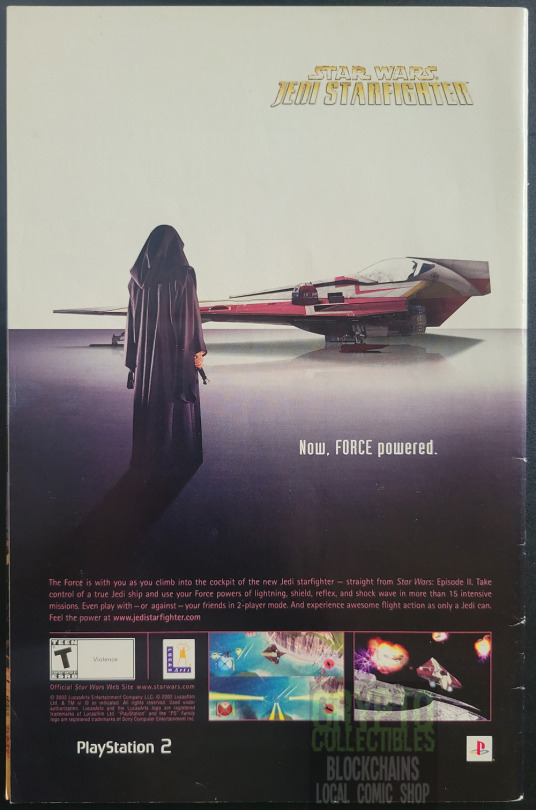
Star Wars Episode II Attack of the Clones #1 (April 2002) by Dark Horse Comics
Written by Henry Gilroy and George Lucas, drawn by Jan Duursema and Ray Kryssing.
#Star Wars#Star Wars Episode II#Attack of the Clones#Dark Horse Comics#Hayden Christensen#Henry Gilroy#George Lucas#Jan Duursema#Ray Kryssing#Etsy#Vintage Comics#Comic Books#Comics#2002#Rebel Alliance#Jedi
6 notes
·
View notes
Text
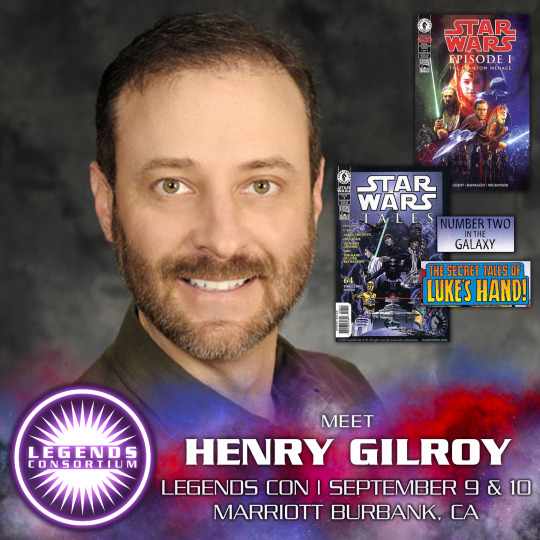
Guest Announcement: Henry Gilroy
While best known to the Star Wars fandom for his TV writing, Henry Gilroy got his start in the Star Wars galaxy with Dark Horse Comics! His Legends work includes several short Star Wars Tales comics, the comic adaptation of The Phantom Menace and associated tie-in comics, and the comic adaptation of Attack of the Clones. Straddling the line between the two eras of canon, he also wrote many comic tie-ins that are formally considered Legends for Star Wars: The Clone Wars.
For those of you who are fans of Wolffe, among Gilroy's work on The Clone Wars comics is issue #9 where Wolffe loses his eye to Ventress;
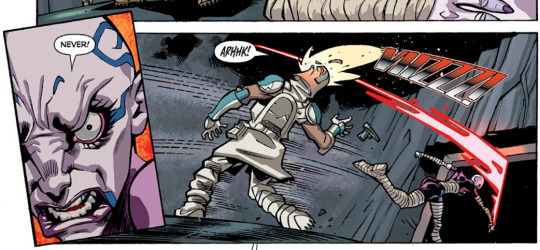
This is also the same comic from which these panels make the rounds on Tumblr where Wolffe and Kit Fisto are trying to determine Plo's age:

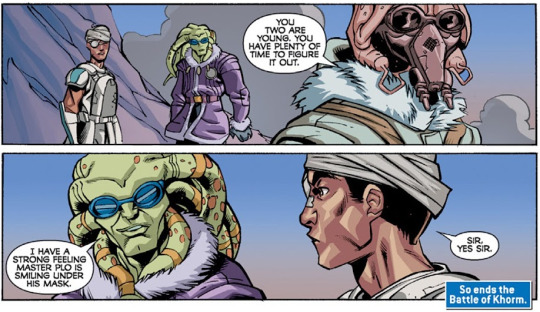
Henry will be participating in panels and signings at Legends Con throughout the weekend of September 9th & 10th at the Marriott Convention Center in Burbank, CA! Buy your tickets by August 29th at: https://www.eventbrite.com/e/legends-consortium-2023-tickets-541786186067
LegendsCon is a fan-run convention celebrating the original Expanded Universe books, comics, games, and other media that are now known as Legends. We seek to create an event that brings together fans in an environment that fosters positivity and inclusivity while we celebrate our love of Legends material. We are an unofficial community organized event, which is not sponsored, run by, or affiliated with Lucasfilm Ltd. All event proceeds will go to The Peter Mayhew Foundation.
#Star Wars Tales#Dark Horse Comics#The Phantom Menace#Attack of the Clones#Plo Koon#Commander Wolffe#Wolffe#TCW Wolffe#Clone Trooper Wolffe#Kit Fisto#TCW#SW TCW#Henry Gilroy#Kel Dor#104th Battalion#The Wolfpack#Star Wars Comics#Star Wars The Clone Wars#Ventress#Asajj Ventress
12 notes
·
View notes
Video
Lift your glasses, we've got a new season of Dirty Laundry premiering on Dropout on September 12th! With host Lily Du, bartender Grant O'Brien, and a few secret-sharing friends: Vanessa Guerrero, Persephone Valentine, Desmond Chiam, Sam Riegel, Liam O'Brien, Anjali Bhimani, Matthew Mercer, Kassem G, Whitney Moore, Mica Burton, Johnny Stanton, Jess Ross, Hector Navarro, Ally Beardsley, Erika Ishii, Anthony Burch, Beth May, Will Campos, Fiona Nova, Shakira Ja'nai Paye, Brett Maline, Jacquis Neal, Alice Stanley, Kimia Behpoornia, Lisa Gilroy, Eli Gonzalez, Claudio Saavedra, Anna Salinas, Heather Higginbotham, Dylan Adler, Michael Henry, Zac Oyama, Kendahl Landreth, Sarah Schauer, Gina Darling, Paul F. Tompkins, Patrick McDonald, Aabria Iyengar, Katie Marovitch, Oscar Montoya, David Kerns, Ebony Elaine Hardin, Chloe Badner, Kyle Rohrbach, Alaska Thunderfuck, Monét X Change, Jujubee, and Katya!
380 notes
·
View notes